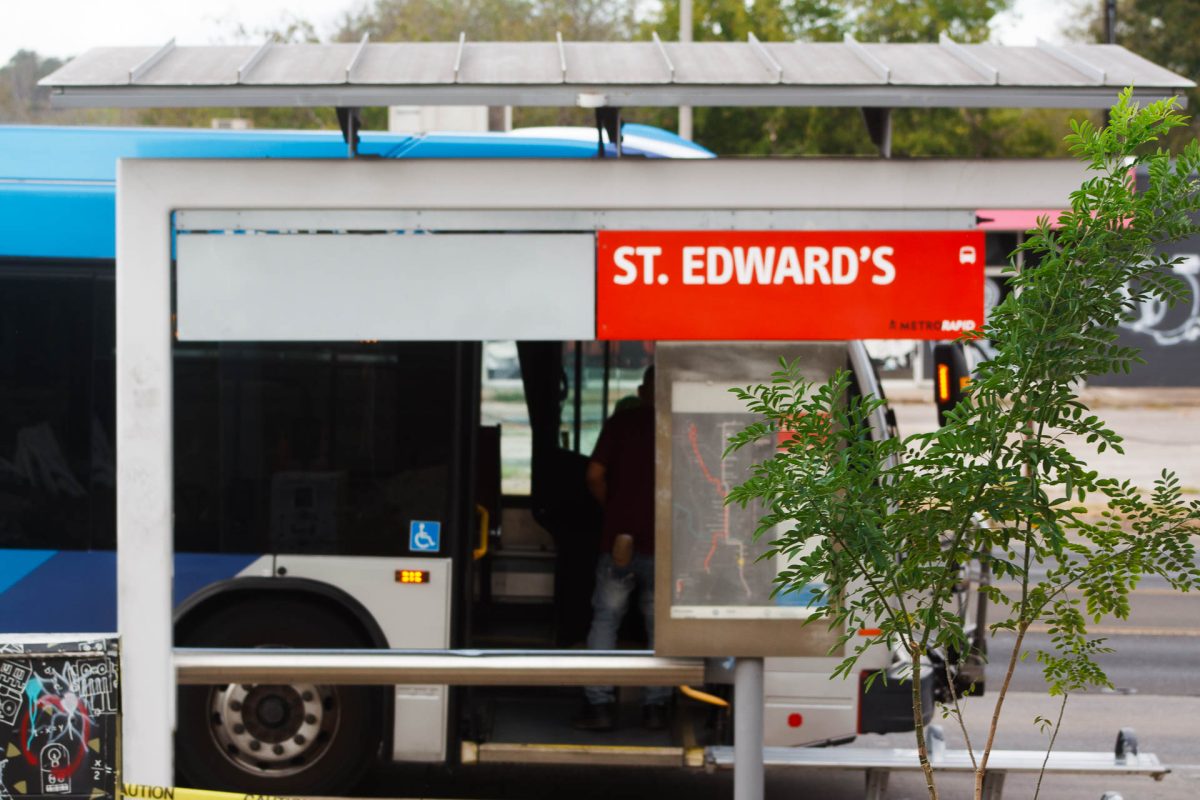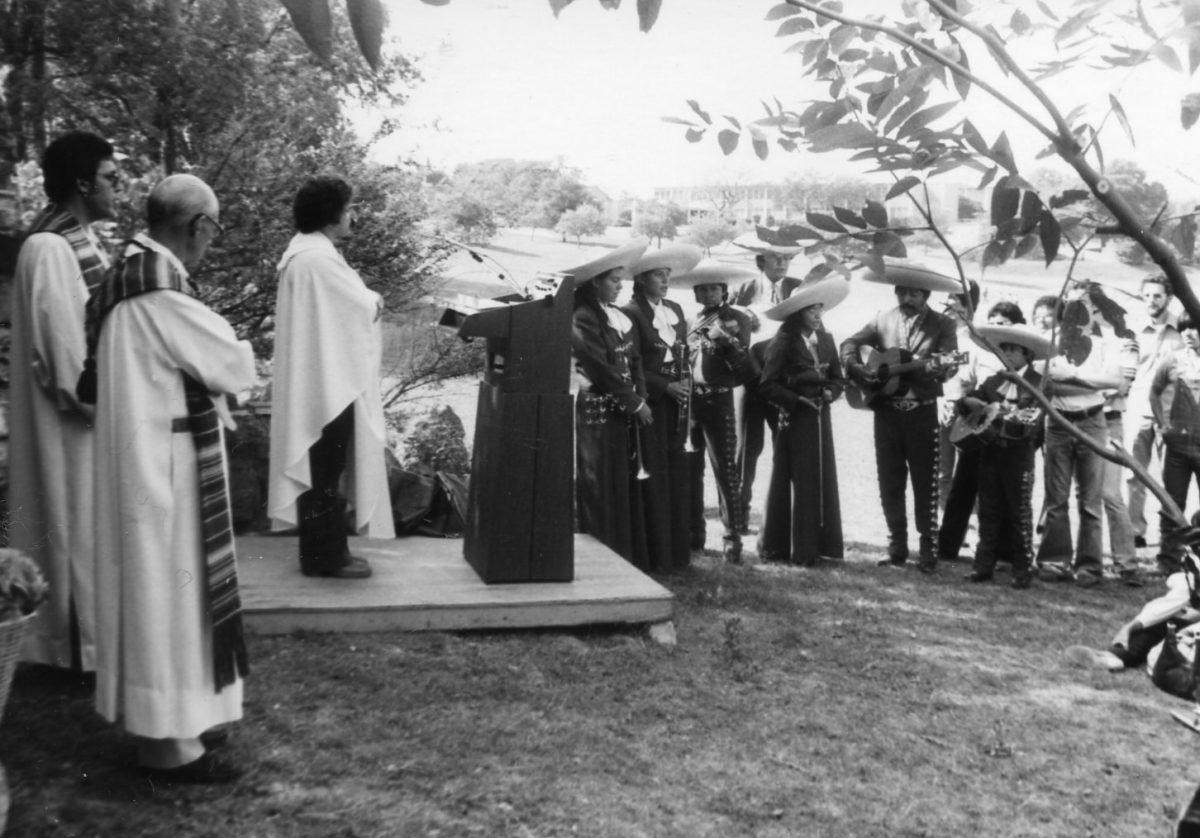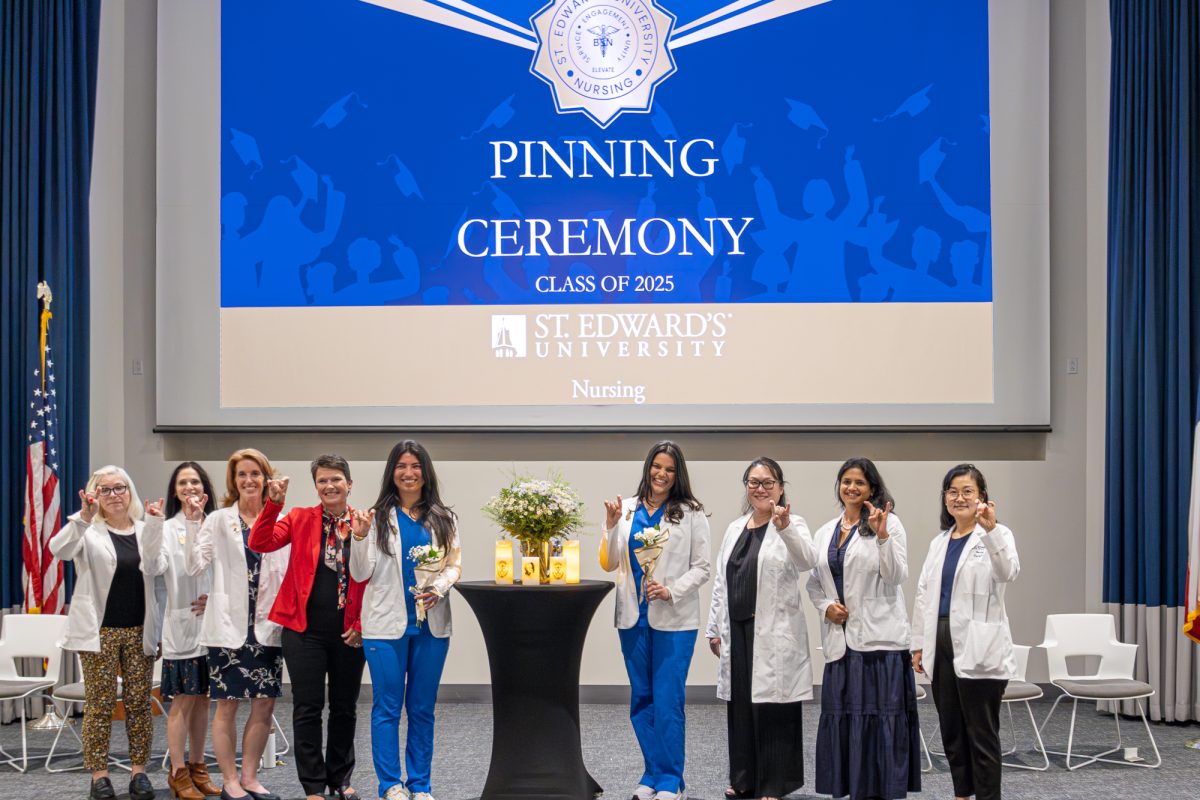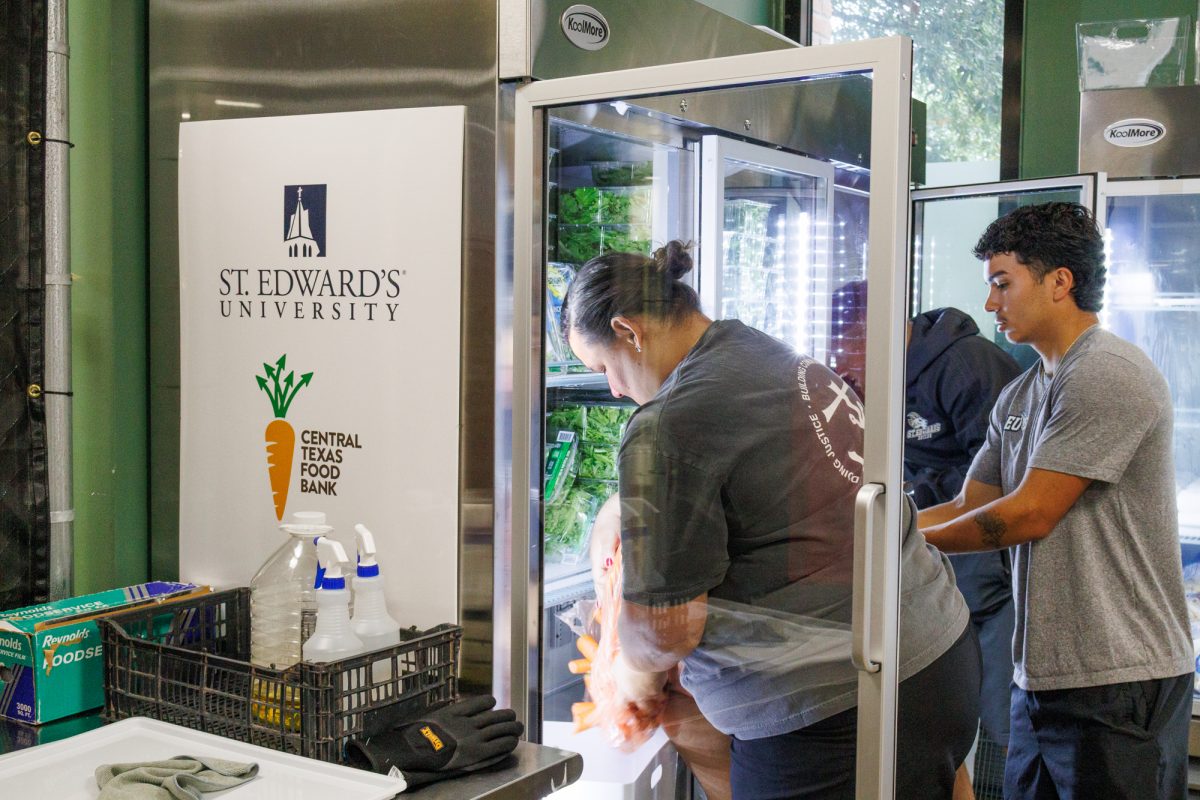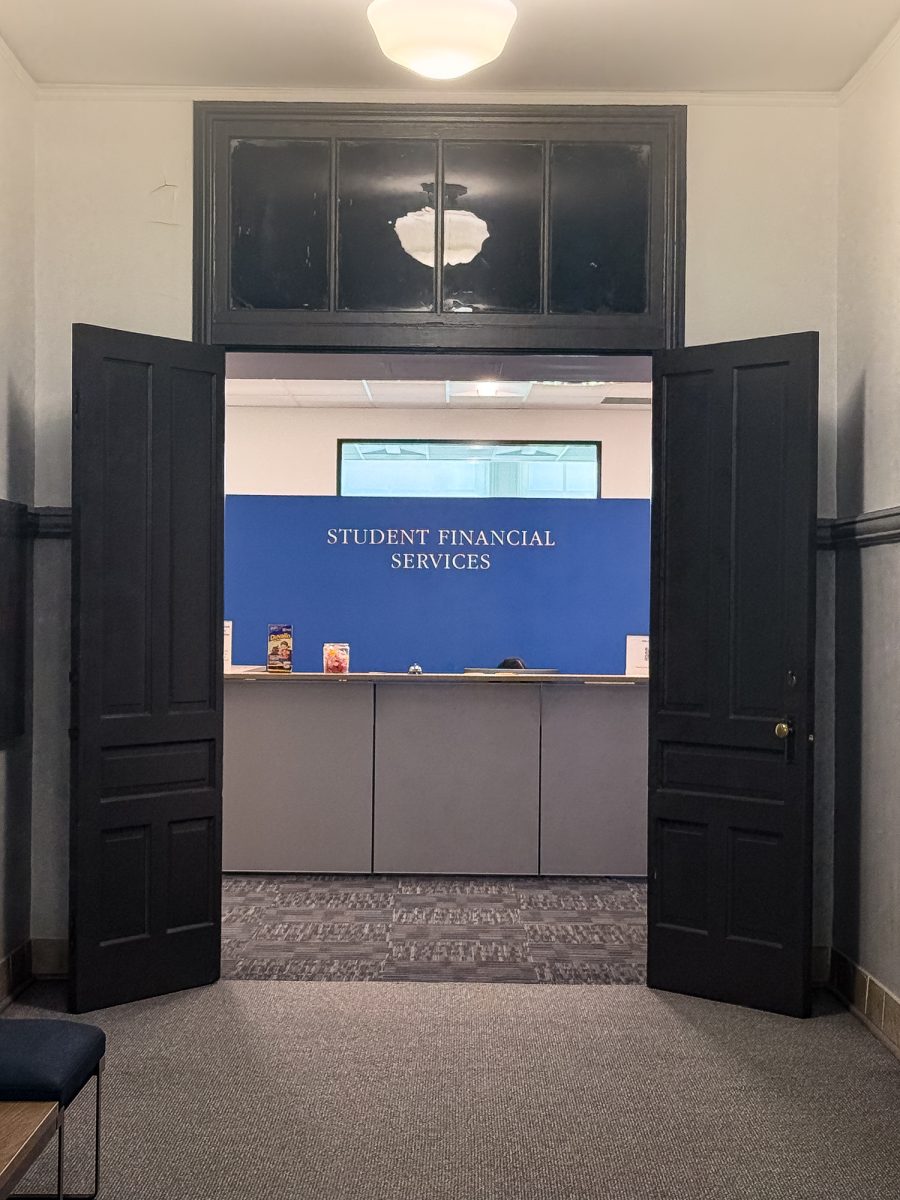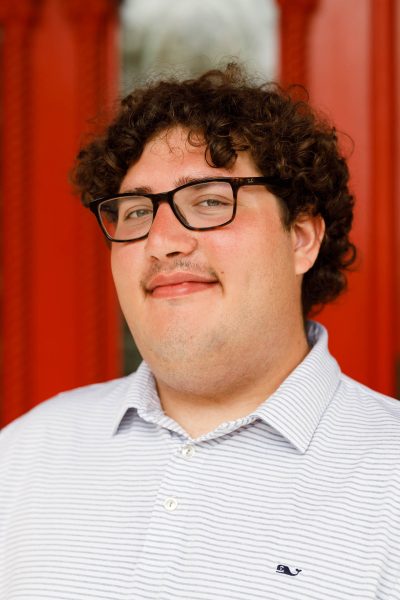St. Edward’s University partnered with H-E-B’s Trees for Texans program to expand St. Edward’s tree canopy over the northbound CapMetro bus stop on South Congress. Additionally, the university’s Climate Resiliency (CLI-RES) Living Laboratory will provide trackers for the trees, as part of their ongoing research.
On Nov. 8, 17 trees of various species were planted around the bus stop located right off campus on South Congress to provide shade in an area previously lacking it.
“This is a bus stop that both the general public and student body use,” Campus Arborist and Sustainability Coordinator Roy Johnson said. “There have been plenty of studies that show that it can actually be hotter inside the bus stop than directly outside of it. That is what we are seeing here.”
With summers in Austin hitting peaks of 107 degrees, members of the community expressed a need for moments of relief from the heat.
“What’s your favorite bus stop with zero shade during these brutal summer days?” a sarcastic Reddit user named “thefourapoxmen” said. “My personal favorites are the ones on South Congress outside of St. Edward’s.”
The newly planted trees seek to provide a solution to this particular “shade issue” while also serving as a model for others to promote urban forestry – a term used to describe the body of trees found within an urban area – within Austin.
“What we know is that to have good ‘tree equity’ you need to at least have 30% of an area covered by a tree canopy,” Johnson said. “Which we have here at St. Edward’s, besides areas such as the bus stop. However, what we can do with our trees is study them and provide this information to communities lacking good tree equity.”
This information is gathered by the CLI-RES Living Laboratory on campus which analyzes trees on campus regarding their health in response to climate, soil types and sun exposure.
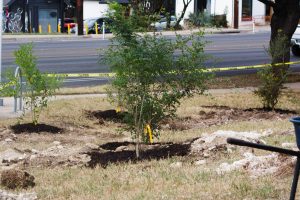
“We started this lab a year ago, with a grant from the city,” Vice President of Operations Jim Morris said. “So we are able to incorporate that into this bus stop effort. We are looking at the different types of trees, and how they do with all of these unprecedented weather conditions we have had in the last few years. Then students take that data, develop the material and take it out to the community.”
The lab features collaboration from professors, staff and students in an effort to conduct research on trees in central Texas. According to Morris and Johnson, St. Edward’s is the first university in Central Texas to use tree tracking technology called “ePlant,” and part of the new wave of universities creating climate resiliency labs.
“I’ve been working since May of this past year as the Climate Resiliency Living Laboratory environmental intern,” St. Edward’s senior environmental science and policy student Janiece Jefferson said. “We’ve been monitoring the trees to see how they respond to extreme drought, extreme rain. We’ve collected data on internal temperature and soil biology. So hopefully it’ll inform us on better management practices when we continue to plant in the future.”
Winter storms have left St. Edward’s with mangled trees and canopy loss, while escalating heat similarly threatens trees and grass’ growth on campus lawns.
“We’re behind the curve, in terms of when we lost a lot of trees because of the 2021 freeze,” Johnson said. “But we’re making it up with a good effort of replacing them with a lot of biodiversity that we didn’t have before.”
H-E-B’s Trees for Texans program is similarly fresh, having been founded on Texas Arbor Day in 2023. Since the program’s creation, H-E-B has planted 170,525 trees throughout the state through 110 different projects. The “CLI-RES Bus Stop Canopy Improvement” project is the program’s first partnership with a university in Austin.
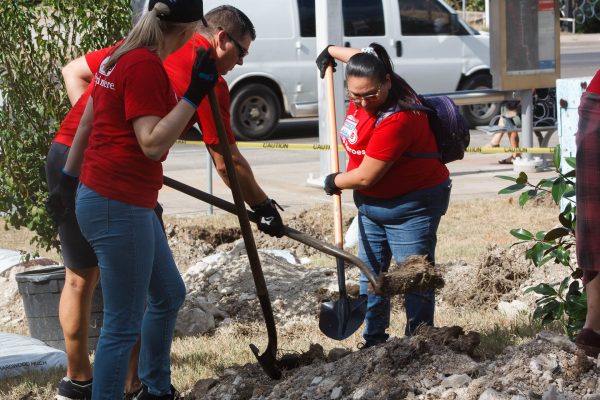
To help plant, leaders and managers from the South Congress H-E-B store came down to St. Edward’s.
“We partner with a lot of local groups to donate trees to different areas and wherever there’s a need,” general manager Joey Lochren said. “We love to come out and help plant ’em all.”
The work day began at 1 p.m. and concluded around 3 p.m. with local news network KXAN visiting and filming. At the event’s conclusion, Lochren informed attendees that the new H-E-B location on Oltorf will open on Dec. 4.
The Office of Sustainability and the Living Lab hope to continue tree planting efforts on campus.
“We’re just getting started, there’s a lot the students can do with the lab,” Morris said. “We’ve got science and the environmental justice aspects; the community connection, and you’ve got the experience you’re learning. It kind of hits three really important measures for our students. There’s a lot of potential with it.”


